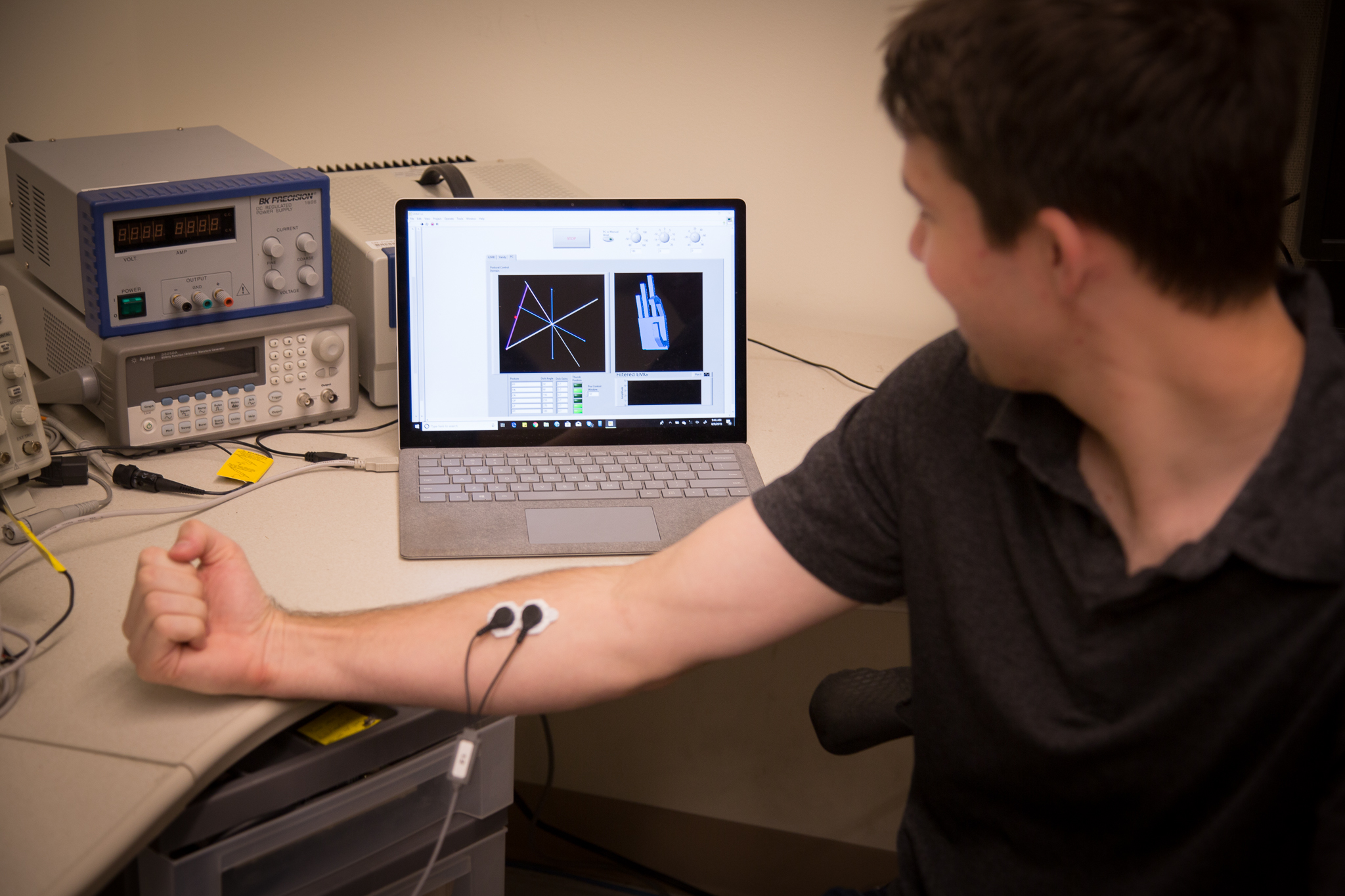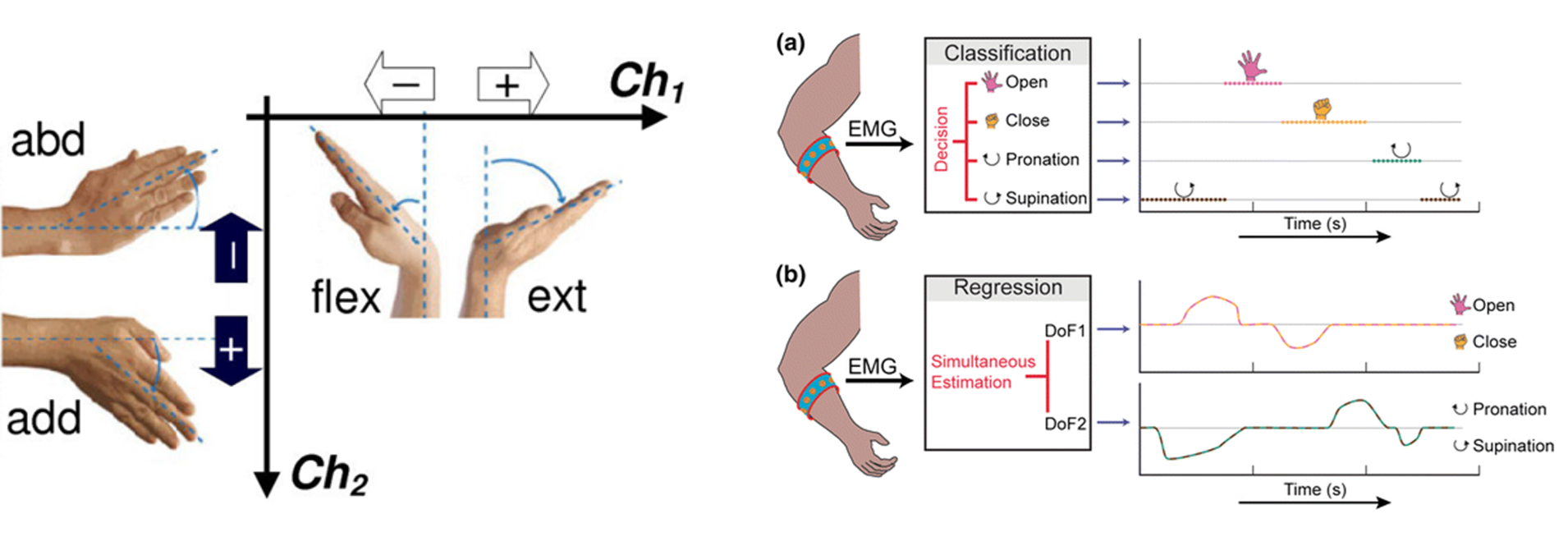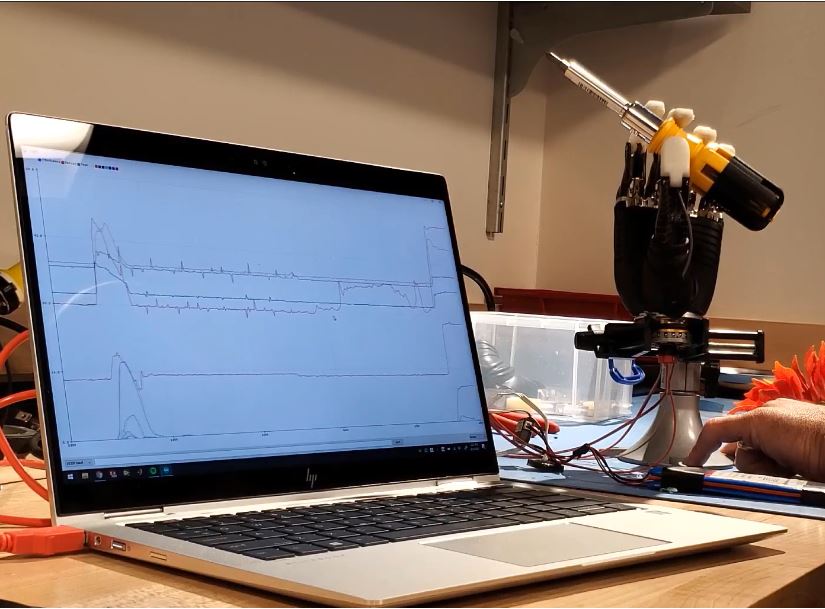Algorithm Development
Weir Biomechatronics Development Laboratory
Algorithm Development
Algorithm development focuses on decoding electromyogram signals into a motion so that users can accomplish a task. While many controllers are able to produce simple grasping tasks well, fine motor skills are currently lacking in even the most advanced prosthetic hands. By creating efficient and accurate algorithms, we hope to increase prosthetic hand versatility for promoting user independence and ability.
Current Projects
Past Projects

Postural Control
Postural Algorithm Controller, Linear Discriminant Analysis (LDA) Classifier and Electrode Implantation
.jpg?sfvrsn=d614d5ba_2)
Predicting Prosthetic Finger Postures
Predicting Prosthetic Finger Postures Via Fuzzy C-Means Classification
References
- Roche, A. D., Rehbaum, H., Farina, D., & Aszmann, O. C. (2014). Prosthetic Myoelectric Control Strategies: A Clinical Perspective. Current Surgery Reports, 2(3). https://doi.org/10.1007/s40137-013-0044-8
- Matrone, G., Cipriani, C., Carrozza, M. C., Magenes, G. (2012). Real-time myoelectric control of a multi-fingered hand prosthesis using principal components analysis. Journal of Neuroengineering and Rehabilitation. 9. 40. 10.1186/1743-0003-9-40. https://www.researchgate.net/figure/Two-DoFs-control-signal-generation-Wrist-movements-re-mapped-into-Ch1-and-Ch2-signals_fig3_227163912
- Roche, A. D., Rehbaum, H., Farina, D., & Aszmann, O. C. (2014). Prosthetic Myoelectric Control Strategies: A Clinical Perspective. Current Surgery Reports, 2(3). https://doi.org/10.1007/s40137-013-0044-8

